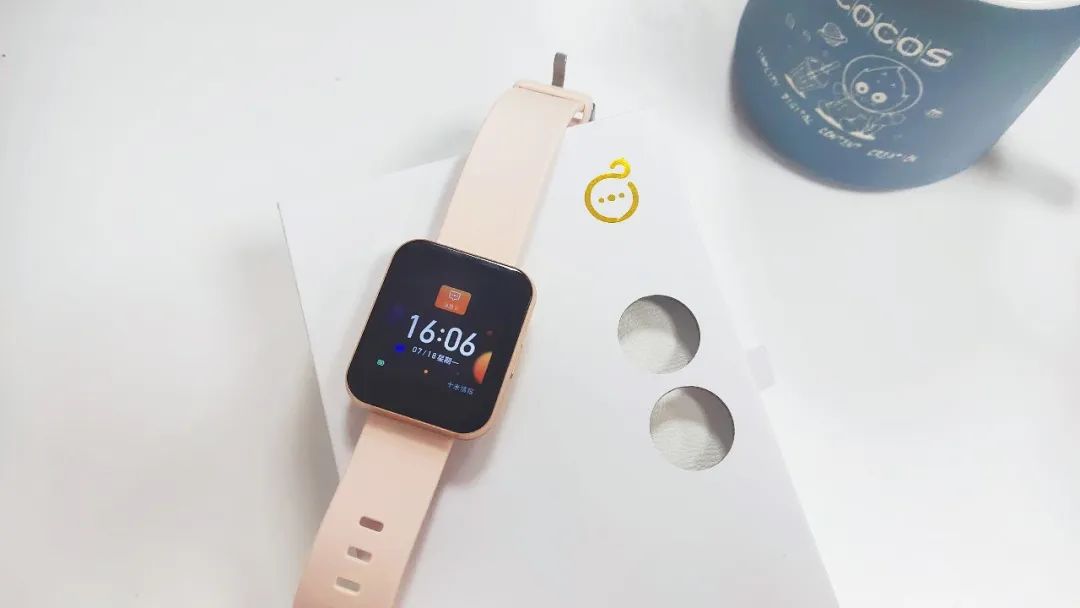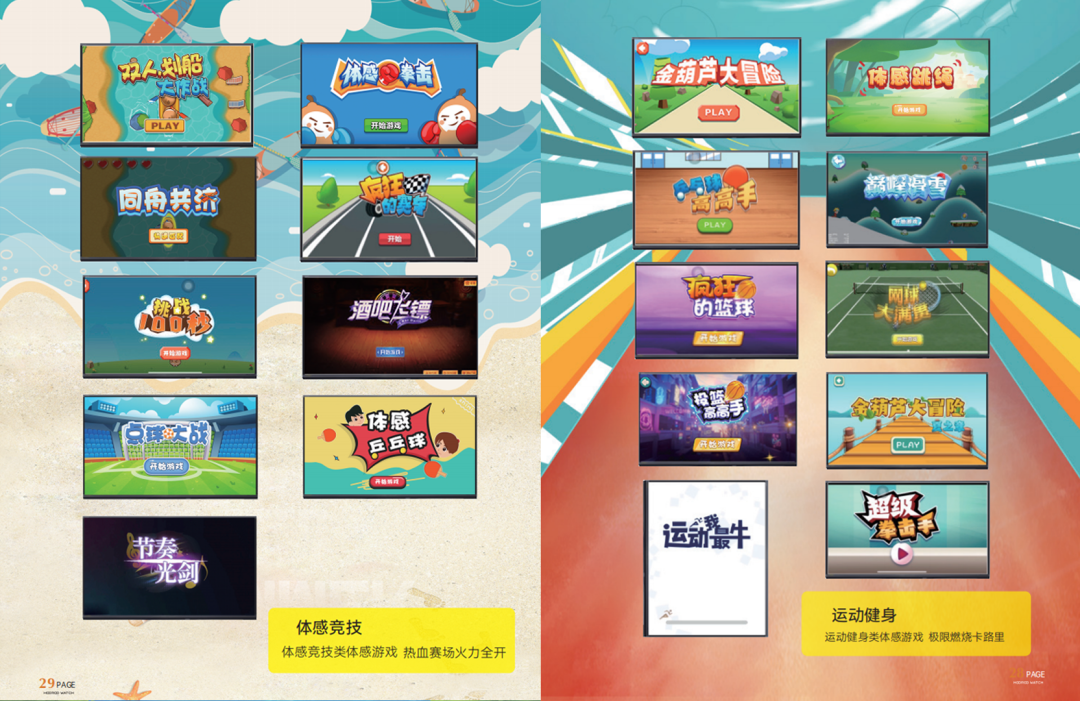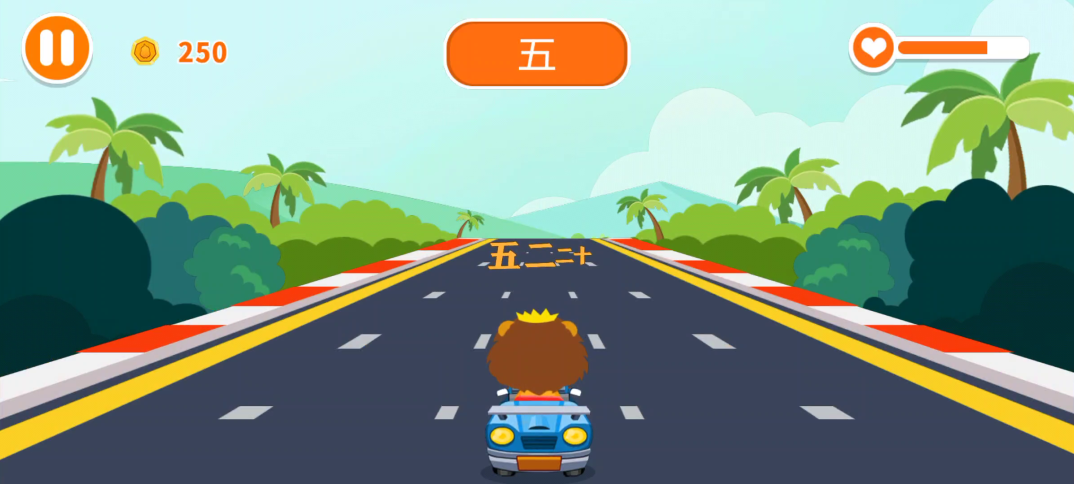The Nintendo Wii and Xbox Kinnect were amazing tech, but have you ever tried to play somatosensory games on a watch or mobile phone?
Some time ago, Sister C, our Chinese marketing member, received a "HooRoo" watch, which is said to be the only wearable game console in the Chinese market, so she immediately tried it.

She first downloaded the "HooRoo" app on her mobile phone, put on the watch, and connected it to the App via Bluetooth. She saw you can play dozens of games using the somatosensory in the watch on the App. When playing, you only need to make various gestures and actions according to the game prompts, and the watch will recognize your actions and control the game synchronously. If you have a big screen at home, you can also cast your mobile phone to the big screen, making it more enjoyable to play.

In terms of game types, sports and fitness categories account for the vast majority. For example, the parkour game "Golden Gourd Adventure" series has players collect gold coins while running and encounter small tasks such as boxing matches and jumps. As the name suggests, it is a somatosensory game version of traditional sports, which supports two-player gameplay. In addition, some casual games such as darts, bar curling, and dice are suitable for friends to play for two rounds.
In just a few months, HooRoo's somatosensory game R&D team has released 36 games on the App, and new ones are released at a rate of 3-5 per month! These games are developed based on Cocos Creator.
How many steps does it take to develop a somatosensory game with Cocos Creator? Why did HooRoo choose to build "wearable somatosensory game consoles"? This time, we invited Guo Chao, the front-end person in charge of the HooRoo's somatosensory games, to listen to him share testing and the breakthrough of the watch.
One App with so many games. How to ensure player experience?
The principle idea of the HooRoo somatosensory game is to establish communication between the watch and the App through Bluetooth so that the App can obtain the watch's data in real-time and provide it to the game. This process involves critical technologies such as Bluetooth communication, embedding the game engine into the App, writing and developing watch actions, two-way communication between the watch and the App, and two-way communication between the App and the game.
"The most difficult part is to embed the Cocos engine into the native app." Guo Chao said, "We checked a lot of information, read the engine source code repeatedly, and it took a lot of effort to embed the engine into the App successfully. The development after that was relatively smooth."

How to develop a somatosensory game? In Cocos Creator, first, we develop like other games and debug the core functions of the entire game. After completion, we create the action algorithm needed for the game, then package it to the native App, connect the watch, and test the actions. We are continuously debugging and optimizing the action algorithm and game bugs. Finally, it's officially packaged and released.
At present, the package size of each somatosensory game on the App is about 9-12 MB. Cocos Creator's lightweight and low-load features allow the game to play at a higher performance in a limited package.
Guo Chao believes: "There are two most important factors that affect the game experience of our players, one is the gameplay, and the other is the action recognition of the watch." The R&D team is also constantly optimizing these two aspects, "Try not to design too complicated gameplay. The multi-real-time action recognition of the watch improves the playability of the game by combining multiple actions; the action recognition of the watch will allow a certain error tolerance, and the player does not have to make the specified action very accurately, as long as basic movement matches, it can then be detected algorithmically."
3-5 new games are added every month, building a rigorous and efficient development workflow
Compared with game consoles such as Switch, which need to purchase games separately after buying the device, Shimi Hulu has launched the slogan of "free updates of the somatosensory game library," which means that users do not need to pay extra after purchasing the watch. All somatosensory games above are free to play. At the same time, while continuing to optimize existing games, the team steadily releases 3-5 new games every month, giving users a steady stream of freshness.

How do you complete the development of these games with quality and quantity? The so-called good worker must first sharpen their tools. Guo Chao said the team first designed a low-coupling, high-reuse game framework at the beginning of the project: "This makes front-end development difficult when multiple people develop games simultaneously. It will affect each other, and everyone will only focus on their own development tasks."
In addition, a "weekly release" work specification has been established within HooRoo. After completing the preparatory work of the project and discussing the requirements, the research and development of the game idea will be put into intensive development, and some product development progress can be seen from the second week. The "Weekly Release" is held by colleagues in the R&D department. Everyone gets together to explain the progress of their products and discuss the products at this time.
After the research and development are completed, the members in charge of the review will review the product one week in advance to determine whether the product meets the quality requirements released for users. Those that meet the requirements can be released, and those games with deficiencies will be released after the revisions are completed. Of course, the project will end if the quality is not up to standard.
Relying on solid technology and standardized workflow, HooRoo has been steadily on the road to developing many somatosensory games and continues to launch more somatosensory games suitable for different age groups and different groups of people.
The next play for somatosensory games?
From wired controllers to wireless controllers to accessories such as sensors on the body and fitness rings, the gameplay of somatosensory games is constantly updated and evolved. So, will combining smart wearable devices become the next trend in somatosensory games?
Guo Chao shared that HooRoo is aimed at the needs of the younger generation of users for the portability and networking capabilities of game devices: "First of all, a small and portable watch can be carried with you. As long as you have a mobile phone, you can connect wirelessly to play somatosensory games anytime, anywhere. Secondly, the watch is not only a somatosensory game operation sensor but also has the basic functions of a smartwatch. Thirdly, the price is also more user-friendly."

Just a few days ago, Shenzhen Shimi Network Technology Co., Ltd., the developer of HooRoo, announced the completion of tens of millions of yuan in Series A financing, led by Chizicheng Technology. The funding will be used to build a somatosensory game development platform by HooRoo to accelerate the development of a new generation of smart wearable somatosensory devices and a rich series of somatosensory games. In addition, the HooRoo app released an overseas version not long ago with English and Japanese languages and has gradually localized the game to prepare for the overseas market.
Nowadays, game research, development, and hardware product technology have significantly progressed. Whether the collision of smart wearable devices and somatosensory games can open up a wider world is worthy of our attention.








